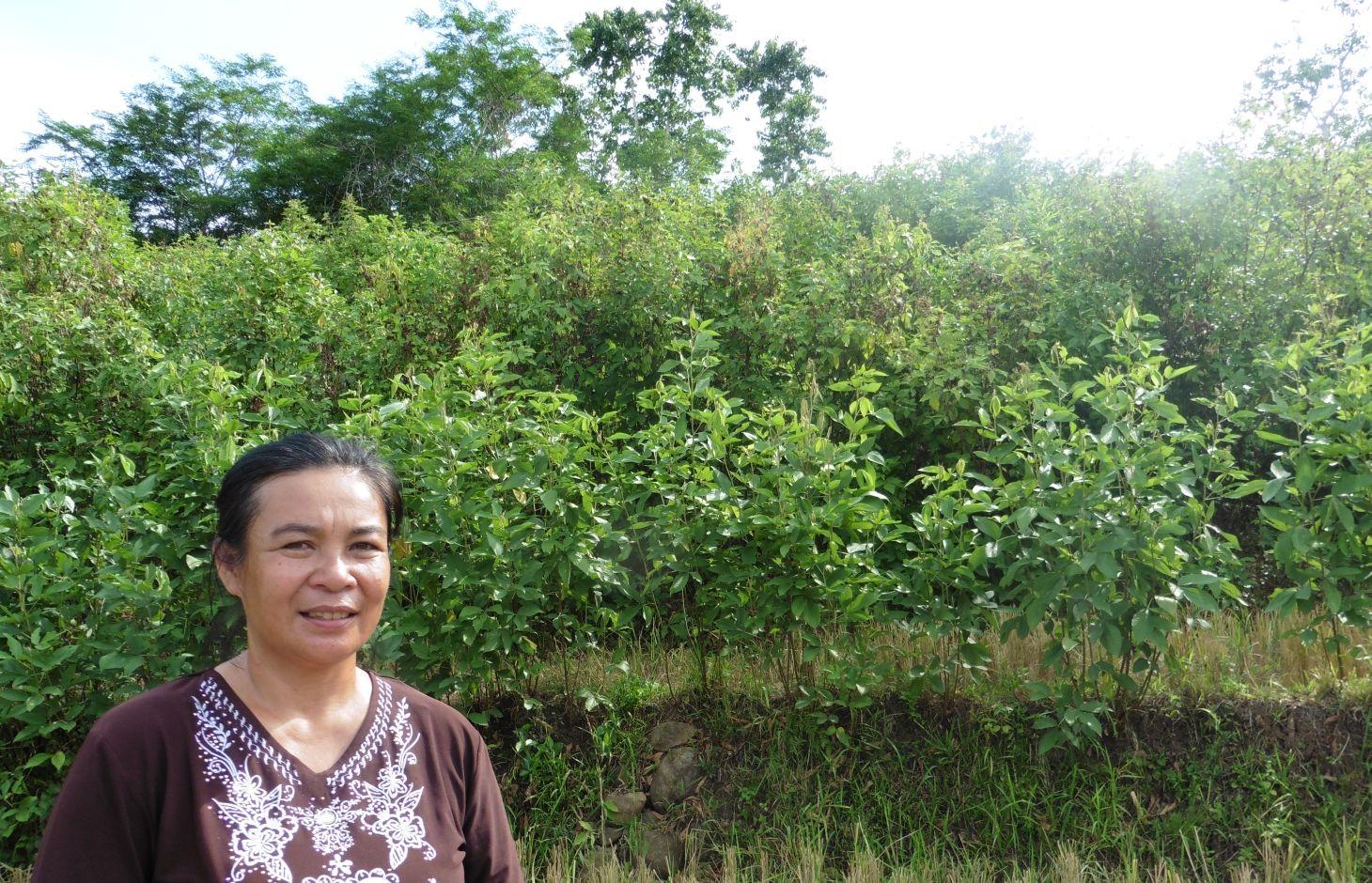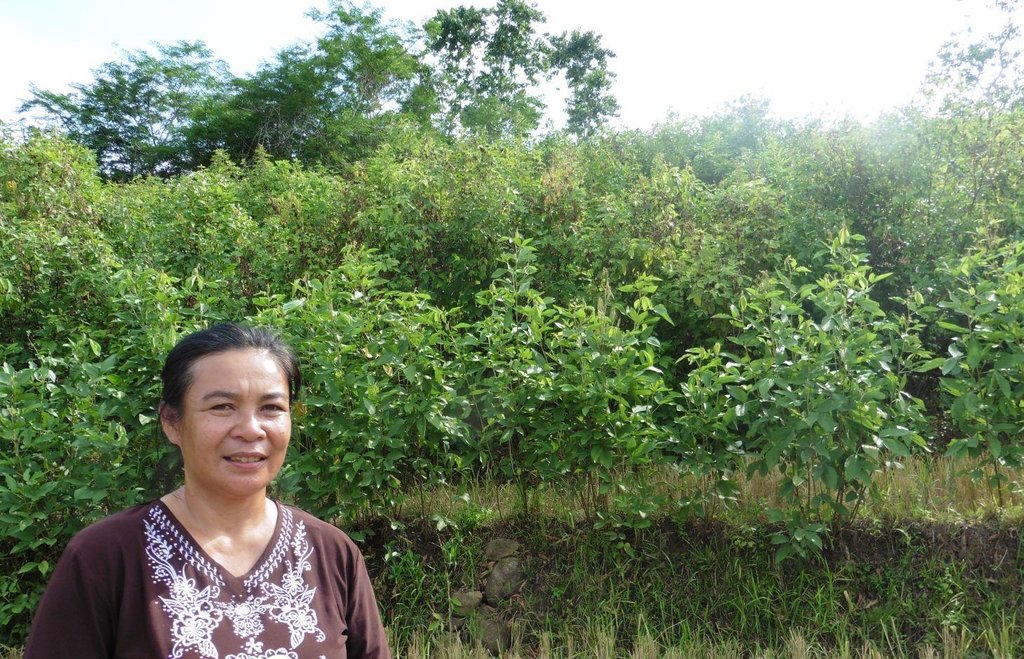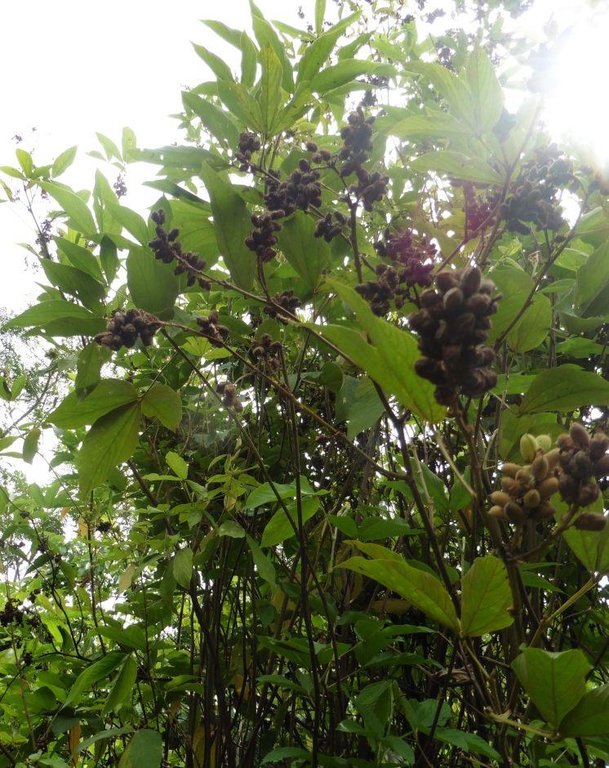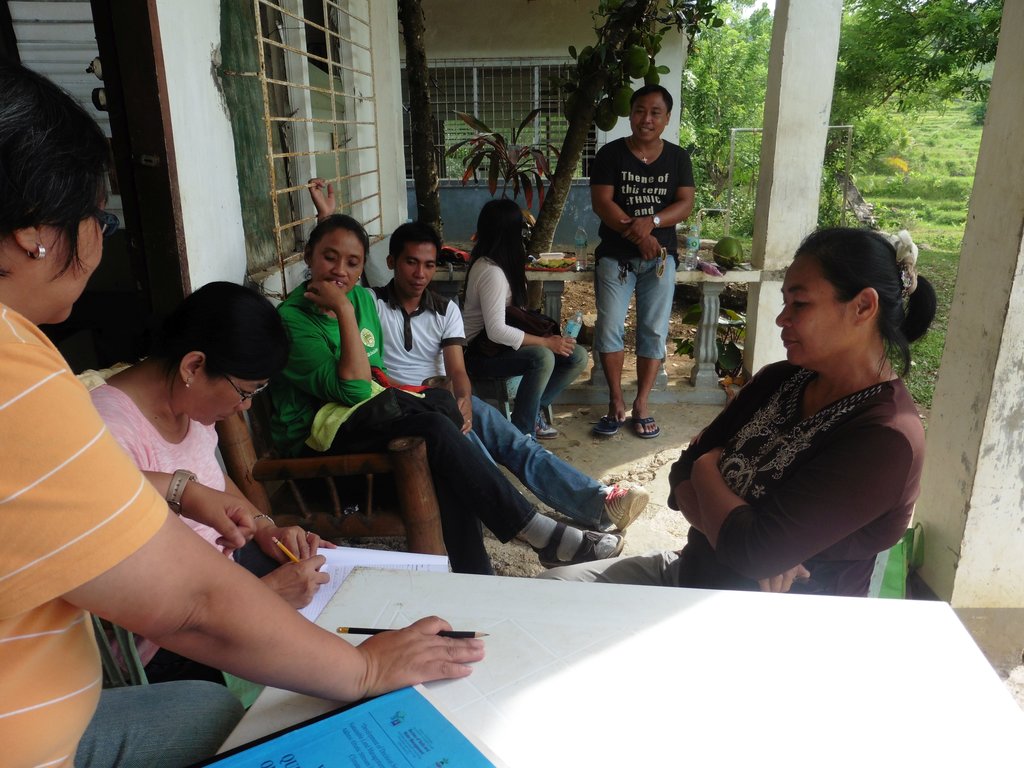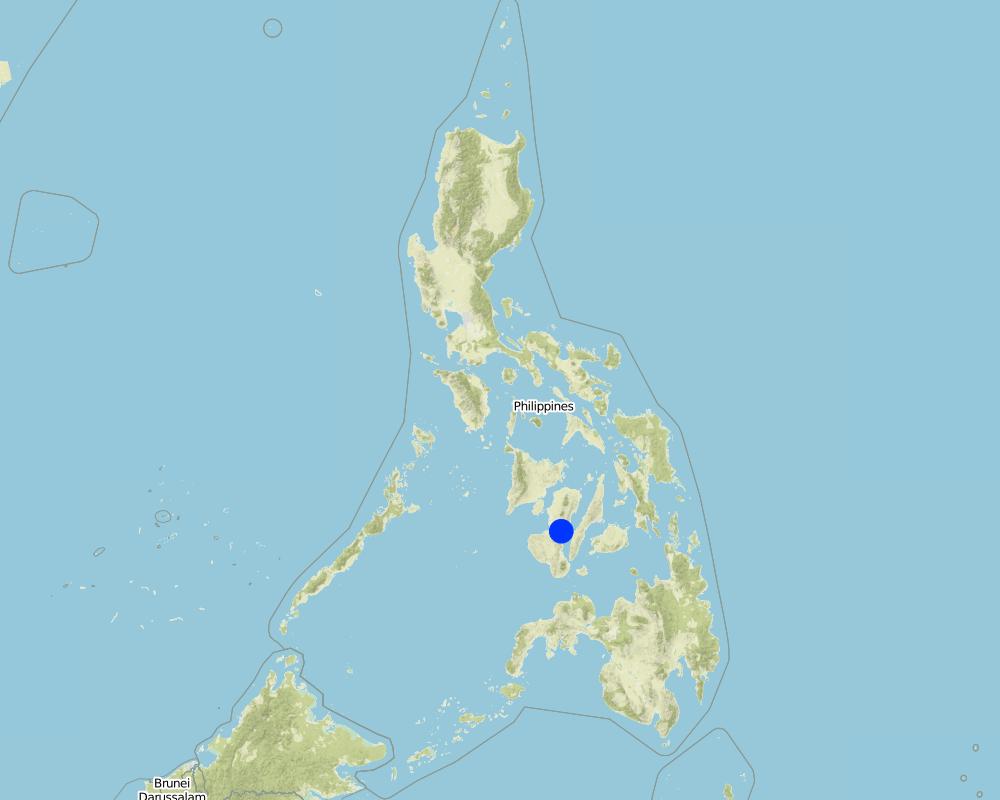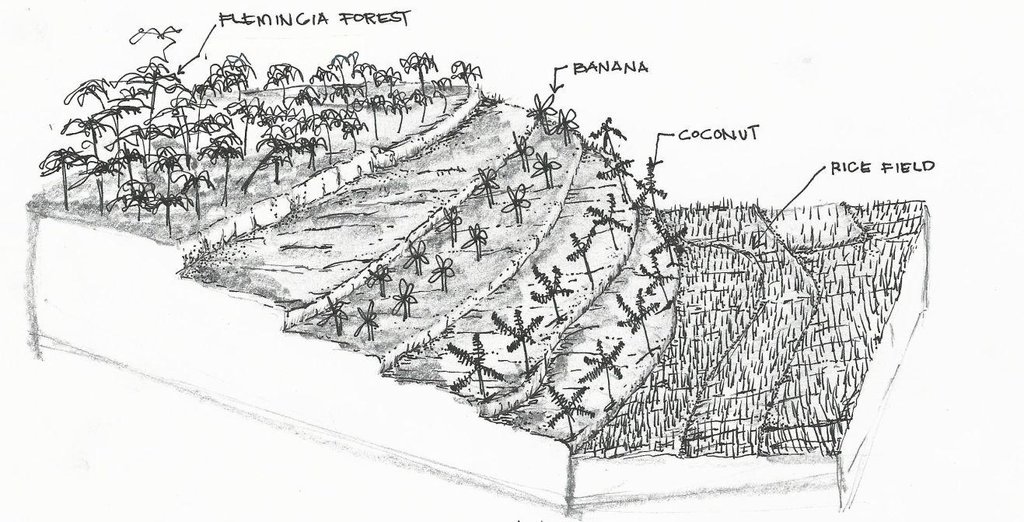Seed Production of Multipurpose Shrubs/Legumes [菲律宾]
- 创建:
- 更新:
- 编制者: Philippine Overview of Conservation Approaches and Technologies
- 编辑者: –
- 审查者: Eduardo Alberto, Alexandra Gavilano
technologies_1701 - 菲律宾
查看章节
全部展开 全部收起1. 一般信息
1.2 参与该技术评估和文件编制的资源人员和机构的联系方式
关键资源人
SLM专业人员:
Dinamling Djolly Ma.
Bureau of Soils and Water Management
Visayas Avenue, Vasra, Quezon City, Philippines
菲律宾
SLM专业人员:
Gregorio Elizabeth
Department of Agriculture-STIARC, RFO IVA
RMIC Bldg., BPI Compound Visayas Ave Quezon City
菲律宾
SLM专业人员:
Luistro Aida
Department of Agriculture-STIARC, RFO IVA
RMIC Bldg., BPI Compound Visayas Ave Quezon City
菲律宾
SLM专业人员:
Gutierrez Albert
LGU of La Libertad
Negros Orienta
菲律宾
有助于对技术进行记录/评估的机构名称(如相关)
Bureau of Soils and Water Management (Bureau of Soils and Water Management) - 菲律宾有助于对技术进行记录/评估的机构名称(如相关)
Southern Tagalog Integrated Agricultural Research Center (STIARC) - 菲律宾有助于对技术进行记录/评估的机构名称(如相关)
LGU of La Libertad - 菲律宾1.3 关于使用通过WOCAT记录的数据的条件
(现场)数据是什么时候汇编的?:
27/05/2015
编制者和关键资源人员接受有关使用通过WOCAT记录数据的条件。:
是
1.5 请参阅有关SLM方法的问卷
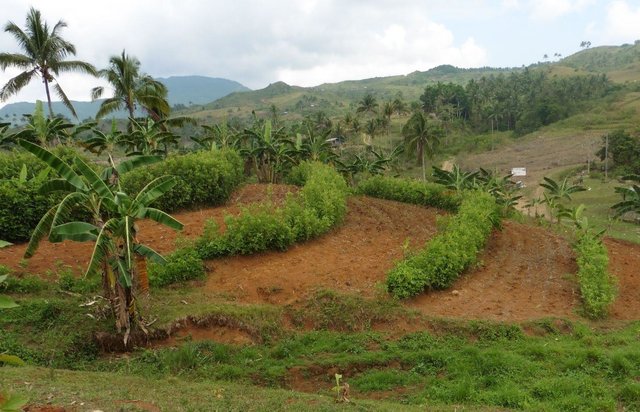
Conservation Farming Village [菲律宾]
A modality in mobilizing resources for sustainable upland development which utilizes a basket of strategies, technologies, and interventions to catalyze the widespread transformation of traditional upland farming systems into resilient and sustainable upland production systems.
- 编制者: Philippine Overview of Conservation Approaches and Technologies
2. SLM技术的说明
2.1 技术简介
技术定义:
Seed production of multipurpose shrubs and legumes, a soil conservation practice in sloping areas wherein flemingia (Flemingia macrophylla) and Indigofera (Indigofera tinctoria) are densely planted along contours.
2.2 技术的详细说明
说明:
Seed production of multipurpose shrubs/legumes is introduced through the Conservation Farming Village (CFV) project in Barangay Elecia, La Libertad, Negros Oriental. Flemingia and Indigofera in particular are drilled along contour lines and maintained until seeds are matured enough for harvesting. Flemengia is a leguminous perennial, deep rooting and leafy shrub with plant height ranging from 0.5 -2.5 m. Indigofera is also a perennial shrub with height of 0.4-1.3 m. The leaves and other plant parts of these shrubs are used as mulch, green manure, feeds for livestock while hard portions and branches are used as firewood. It is regarded as high drought resistant, staying green even during dry periods of 3-4 months. Seeds produced are sold to the local government of La Libertad for the CFV project expansion.
Purpose of the Technology: Seed production of forage legumes like Flemingia and Indigofera is practiced by farmers primarily to enrich the soil and supplement the seed requirement of expansion areas of the CFV project in the municipality. The technology improves ground cover and traps dispersed or concentrated run-off in sloping areas.
Establishment / maintenance activities and inputs: In a hectare, contour establishment using an A-frame requires eight person-days while land preparation (i.e plowing and furrowing) requires at least 30 person-animal-days. Flemingia and Indigofera seeds are drilled along contours at rate of 24kg/ha and 8kg/ha, respectively. Weeding and hilling-up are done in 30 person-animal-day.
Harvesting of pods starts during the months of February, May and October. Meanwhile, Indigofera produces seeds three months after flowering which starts a year from planting. Matured pods are harvested twice a year by hand-picking then sun-dried for at least two days. Seeds are removed from pods manually.
Natural / human environment: The area is under a humid climate condition with an average annual rainfall of 1000-1500 mm per year and elevation ranging from 500-1000 m above sea level. Flemengia and Indigofera are grown by small scale farmers with a cropland size of 0.5-1 ha. Water supply for crop development mainly relies on the occurrence of rain. The area has a low access to services and infrastructure such as education, market, road and transport.
2.3 技术照片
2.5 已应用该技术的、本评估所涵盖的国家/地区/地点
国家:
菲律宾
区域/州/省:
Brgy. Elecia, La Libertad
有关地点的进一步说明:
Negros Oriental
Map
×2.6 实施日期
如果不知道确切的年份,请说明大概的日期:
- 不到10年前(最近)
2.7 技术介绍
详细说明该技术是如何引入的:
- 通过项目/外部干预
3. SLM技术的分类
3.1 该技术的主要目的
- 减少、预防、恢复土地退化
- 保护生态系统
- 创造有益的经济影响
3.2 应用该技术的当前土地利用类型

农田
- 乔木与灌木的种植
主要农作物(经济作物及粮食作物):
Other crops: Flemengia and Idigofera
注释:
Major land use problems (compiler’s opinion): Land degradation, soil erosion, poor soil fertility condition
Major land use problems (land users’ perception): Problem of flooding, soil erosion, lack of vegetation to control erosion
Future (final) land use (after implementation of SLM Technology): Cropland: Ct: Tree and shrub cropping
如果由于技术的实施而导致土地用途发生变化,则在技术实施前说明土地利的用途。:
Forests / woodlands: Fn: Natural
3.3 有关土地利用的更多信息
该技术所应用土地的供水:
- 雨养
3.4 该技术所属的SLM组
- 改良的地面/植被覆盖
- increased income through selling of seeds
3.5 技术传播
注释:
Total area covered by the SLM Technology is 13.75 m2.
3.6 包含该技术的可持续土地管理措施

植物措施
- V1:乔木和灌木覆盖层
注释:
Main measures: vegetative measures
3.7 该技术强调的主要土地退化类型

土壤水蚀
- Wt:表土流失/地表侵蚀

化学性土壤退化
- Cn:肥力下降和有机质含量下降(非侵蚀所致)

生物性退化
- Bc:植被覆盖的减少
注释:
Main type of degradation addressed: Wt: loss of topsoil / surface erosion, Cn: fertility decline and reduced organic matter content, Bc: reduction of vegetation cover
Main causes of degradation: deforestation / removal of natural vegetation (incl. forest fires) (removal of trees), over-exploitation of vegetation for domestic use (slash and burn practice)
Secondary causes of degradation: change in temperature (temperature increase), change of seasonal rainfall (unpredictable seasonal rainfall), droughts (experienced on the month of February), education, access to knowledge and support services (limited access to learning facilities and information)
3.8 防止、减少或恢复土地退化
具体数量名该技术与土地退化有关的目标:
- 修复/恢复严重退化的土地
注释:
Main goals: rehabilitation / reclamation of denuded land
4. 技术规范、实施活动、投入和成本
4.1 该技术的技术图纸
4.2 技术规范/技术图纸说明
Flemingia stand at the top portion of Herminigilda Cabasag's farm.
Location: Brgy. Elecia,. La Libertad, Negros Oriental
Date: May 28, 2015
Technical knowledge required for field staff / advisors: moderate
Technical knowledge required for land users: moderate
Main technical functions: control of dispersed runoff: retain / trap, control of concentrated runoff: retain / trap, improvement of ground cover, promotion of vegetation species and varieties (quality, eg palatable fodder)
Secondary technical functions: reduction of slope angle, reduction of slope length, increase of surface roughness, increase in organic matter, reduction in wind speed
Aligned: -contour
Vegetative material: T : trees / shrubs
Number of plants per (ha): 6 kilogram
Vertical interval between rows / strips / blocks (m): 0.5m
Spacing between rows / strips / blocks (m): 2m
Vertical interval within rows / strips / blocks (m): drill
Width within rows / strips / blocks (m): 0.3048
Trees/ shrubs species: Flemengia and Indigofera
4.3 有关投入和成本计算的一般信息
具体说明成本和投入是如何计算的:
- 每个技术区域
注明尺寸和面积单位:
1 hectare
具体说明成本计算所用货币:
- 美元
注明美元与当地货币的汇率(如相关):1美元=:
45.0
注明雇用劳工的每日平均工资成本:
2.78
4.4 技术建立活动
| 活动 | 措施类型 | 时间 | |
|---|---|---|---|
| 1. | Land Preparation:PlowingHarrowing and Furrowing | 植物性的 | Before onset of rainy season |
| 2. | Establishment of contour lines/ laying out | 植物性的 | Before onset of rainy season |
4.5 技术建立所需要的费用和投入
| 对投入进行具体说明 | 单位 | 数量 | 单位成本 | 每项投入的总成本 | 土地使用者承担的成本% | |
|---|---|---|---|---|---|---|
| 劳动力 | Labour | 0.25ha | 1.0 | 49.44 | 49.44 | 100.0 |
| 设备 | Bamboo sticks | 50 pegs | 1.0 | 2.22 | 2.22 | 100.0 |
| 技术建立所需总成本 | 51.66 | |||||
4.6 维护/经常性活动
| 活动 | 措施类型 | 时间/频率 | |
|---|---|---|---|
| 1. | Weeding/ Hilling-up | 植物性的 | Rainy Season |
| 2. | Harvesting | 植物性的 | Five times per year |
| 3. | Sun Drying | 植物性的 | |
| 4. | Manual Threshing | 植物性的 | |
| 5. | Harvesting of Flemengia and Indigofera | 植物性的 |
4.7 维护/经常性活动所需要的费用和投入(每年)
| 对投入进行具体说明 | 单位 | 数量 | 单位成本 | 每项投入的总成本 | 土地使用者承担的成本% | |
|---|---|---|---|---|---|---|
| 劳动力 | Labour | 0.25ha | 1.0 | 43.1 | 43.1 | 100.0 |
| 技术维护所需总成本 | 43.1 | |||||
5. 自然和人文环境
5.1 气候
年降雨量
- < 250毫米
- 251-500毫米
- 501-750毫米
- 751-1,000毫米
- 1,001-1,500毫米
- 1,501-2,000毫米
- 2,001-3,000毫米
- 3,001-4,000毫米
- > 4,000毫米
农业气候带
- 潮湿的
Thermal climate class: tropics
5.2 地形
平均坡度:
- 水平(0-2%)
- 缓降(3-5%)
- 平缓(6-10%)
- 滚坡(11-15%)
- 崎岖(16-30%)
- 陡峭(31-60%)
- 非常陡峭(>60%)
地形:
- 高原/平原
- 山脊
- 山坡
- 山地斜坡
- 麓坡
- 谷底
垂直分布带:
- 0-100 m a.s.l.
- 101-500 m a.s.l.
- 501-1,000 m a.s.l.
- 1,001-1,500 m a.s.l.
- 1,501-2,000 m a.s.l.
- 2,001-2,500 m a.s.l.
- 2,501-3,000 m a.s.l.
- 3,001-4,000 m a.s.l.
- > 4,000 m a.s.l.
关于地形的注释和进一步规范:
Altitudinal zone: 501-1000m a.s.l. (552 meters)
5.3 土壤
平均土层深度:
- 非常浅(0-20厘米)
- 浅(21-50厘米)
- 中等深度(51-80厘米)
- 深(81-120厘米)
- 非常深(> 120厘米)
土壤质地(表土):
- 细粒/重质(粘土)
表土有机质:
- 高(>3%)
如有可能,附上完整的土壤描述或具体说明可用的信息,例如土壤类型、土壤酸碱度、阳离子交换能力、氮、盐度等。:
Soil fertility is medium
Soil drainage / infiltration is medium
Soil water storage capacity is medium
5.4 水资源可用性和质量
地下水位表:
< 5米
地表水的可用性:
好
水质(未处理):
良好饮用水
5.5 生物多样性
物种多样性:
- 中等
栖息地多样性:
- 中等
5.6 应用该技术的土地使用者的特征
生产系统的市场定位:
- 商业/市场
相对财富水平:
- 贫瘠
- 平均水平
个人或集体:
- 个人/家庭
机械化水平:
- 手工作业
- 畜力牵引
性别:
- 女人
- 男人
说明土地使用者的其他有关特征:
Land users applying the Technology are mainly common / average land users
Population density: < 10 persons/km2
Annual population growth: 1% - 2%; 2%
60% of the land users are average wealthy and own 60% of the land.
40% of the land users are poor and own 40% of the land.
Level of mechanization: Manual work and animal traction (carabao)
Market orientation: Commercial/market (for Local Governmnet Unit expansion projects)
5.7 应用该技术的土地使用者拥有或租用的平均土地面积
- < 0.5 公顷
- 0.5-1 公顷
- 1-2 公顷
- 2-5公顷
- 5-15公顷
- 15-50公顷
- 50-100公顷
- 100-500公顷
- 500-1,000公顷
- 1,000-10,000公顷
- > 10,000公顷
这被认为是小规模、中规模还是大规模的(参照当地实际情况)?:
- 小规模的
5.8 土地所有权、土地使用权和水使用权
土地所有权:
- 个人,有命名
土地使用权:
- 个人
用水权:
- 自由进入(无组织)
5.9 进入服务和基础设施的通道
健康:
- 贫瘠
- 适度的
- 好
教育:
- 贫瘠
- 适度的
- 好
技术援助:
- 贫瘠
- 适度的
- 好
就业(例如非农):
- 贫瘠
- 适度的
- 好
市场:
- 贫瘠
- 适度的
- 好
能源:
- 贫瘠
- 适度的
- 好
道路和交通:
- 贫瘠
- 适度的
- 好
饮用水和卫生设施:
- 贫瘠
- 适度的
- 好
金融服务:
- 贫瘠
- 适度的
- 好
6. 影响和结论性说明
6.1 该技术的现场影响
社会经济效应
生产
作物生产
产品多样性
收入和成本
农业收入
收入来源的多样性
社会文化影响
社区机构
Improved livelihoods and human well-being
生态影响
水循环/径流
水的回收/收集
土壤
土壤覆盖层
土壤流失
养分循环/补给
6.3 技术对渐变气候以及与气候相关的极端情况/灾害的暴露和敏感性(土地使用者认为的极端情况/灾害)
渐变气候
渐变气候
| 季节 | 气候变化/极端天气的类型 | 该技术是如何应对的? | |
|---|---|---|---|
| 年温度 | 增加 | 不好 |
气候有关的极端情况(灾害)
气象灾害
| 该技术是如何应对的? | |
|---|---|
| 局地暴雨 | 好 |
气候灾害
| 该技术是如何应对的? | |
|---|---|
| 干旱 | 不好 |
注释:
Mitigating measure is recommended such as drip irrigation if it is for commercial seed production.
6.4 成本效益分析
技术收益与技术建立成本相比如何(从土地使用者的角度看)?
短期回报:
积极
长期回报:
积极
技术收益与技术维护成本/经常性成本相比如何(从土地使用者的角度看)?
短期回报:
积极
长期回报:
积极
6.5 技术采用
如若可行,进行量化(住户数量和/或覆盖面积):
10 land user families/households
在所有采用这项技术的人当中,有多少人是自发地采用该技术,即未获得任何物质奖励/付款?:
- 50-90%
注释:
63% of land user families have adopted the Technology with external material support
10 land user families have adopted the Technology with external material support
Comments on acceptance with external material support: External support in terms of seed subsidy and trainings provided for the land user.
37% of land user families have adopted the Technology without any external material support
6 land user families have adopted the Technology without any external material support
There is a moderate trend towards spontaneous adoption of the Technology
Comments on adoption trend: Other neighboring villages are adopting the technology to supplement the production of forage seeds used as hedgerows in the municipality.
6.7 该技术的优点/长处/机会
| 土地使用者眼中的长处/优势/机会 |
|---|
| Increased and diversified income of the land users to support their families and send their children to school. |
|
Strong LGU support through provision of trainings on vermi composting, nursery establishment, farm planning, forestry, vegetable production, determining soil erosion and rapid composting. How can they be sustained / enhanced? Establishment of training centers for farmers and agricultural technician of the LGU for knowledge sharing. |
| 编制者或其他关键资源人员认为的长处/优势/机会 |
|---|
|
Multipurpose shrubs/legumes planted along contour control soil erosion, increased soil fertility and serve as wind break. How can they be sustained / enhanced? Continuous practice and support from the local government. |
|
Available market for the seeds. Flemingia and Indigofera seeds are sold to the Local Government Unit of La Libertad at 250 pesos (5.56 dollar) per kilogram to be used in other CFV barangay as hedgerows. How can they be sustained / enhanced? Improvement of the packaging of the forage seeds to increase its viability and marketability outside the municipality. |
6.8 技术的弱点/缺点/风险及其克服方法
| 土地使用者认为的弱点/缺点/风险 | 如何克服它们? |
|---|---|
| Prone to pod-popping when seeds are over matured resulting in low seed harvest | To harvest on time |
| Lack of post-harvest facility on the seed storage area | Provision of storage facility to maintain seed viability and prolong seed shelf life. |
| 编制者或其他关键资源人员认为的弱点/缺点/风险 | 如何克服它们? |
|---|---|
| Low seed production during long dry season or drought | Provision of irrigation system |
7. 参考和链接
7.1 信息的方法/来源
- 实地考察、实地调查
- 与土地使用者的访谈
链接和模块
全部展开 全部收起链接

Conservation Farming Village [菲律宾]
A modality in mobilizing resources for sustainable upland development which utilizes a basket of strategies, technologies, and interventions to catalyze the widespread transformation of traditional upland farming systems into resilient and sustainable upland production systems.
- 编制者: Philippine Overview of Conservation Approaches and Technologies
模块
无模块


